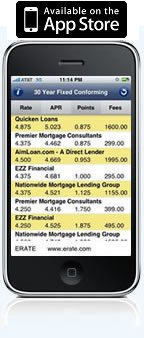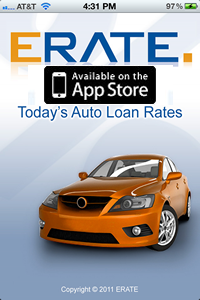Automobile Financing
Special Report: Hitting the Brakes on Auto Dealer Loans
Auto dealer loans can be as toxic as outlawed mortgages
by Broderick Perkins
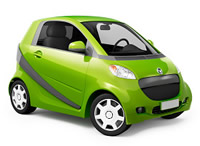
(4/25/2011) Packed with the same kind of kickback that's now illegal in the mortgage lending industry, auto dealer loans can cost consumers an unnecessary $1,200 to $1,700 over the life of the loan -- more if you have bad credit.
The culprit is the "dealer reserve," a kickback auto dealers receive for selling customers loans with higher interest rates, even when customers can qualify for a lower interest rate.
The fee amounts to an auto dealer performing financing services for about $1,000 an hour and nationwide that will cost 2009 car buyers $25.8 billion over the life of their loans, according to the Center for Responsible Lending's (CRL) scathing "Under the Hood: Auto Loan Interest Rate Hikes Inflate Consumer Costs and Loan Losses."
The report examined 2009 data including bonds backed by loans with the hidden markups, survey data from 25 auto-finance companies with a combined 1.7 million accounts, and other industry information.
Under the Hood is a you-really-better-shop-around eye-opener for those looking to finance an auto purchase.
In addition to more expensive loans, the report links dealer mark ups to higher rates of default and repossession, particularly among subprime borrowers.
Surprisingly, eight out of 10 car buyers accept loans from the auto dealer.
Toxic mortgage similarities
Auto loan padding sounds eerily similar to problems associated with yield spread premiums (YSPs) and other predatory lending practices that contributed to the economic meltdown. YSPs were commissions mortgage brokers were once paid to steer mortgage borrowers to more expensive home loans, but were outlawed, effective April 6 this year.
"If an increase in the delinquency rate can be directly correlated to this practice, a legislative remedy to end it should be sought sooner rather than later as this practice clearly parallels the mortgage industry's now defunct yield spread premium and sub-prime practices," said Nancy Osborne, chief operating officer of ERATE, a Santa Clara, CA-based financial information publisher and interest rate tracker.
In another report, "Car dealers adopt outlawed mortgage tactics, new consumer agency powerless against them," the Center For Public Integrity (CPI) echoes CRL's grim findings.
The CPI report says the auto dealer loan industry also has a bag of high-pressure tricks including the "yo-yo." The dealer offers a low-low interest rate, lets the customer drive a new car home, but later tells them the financing fell through. The hope is, buyers will fall in love with the car and accept a higher interest rate when they return the vehicle.
CPI also says, just as Wall Street gambled on securities bundled with toxic mortgages for homes on Main Street, a growing auto loan trend is selling investors securities bundled with subprime auto loans.
The practice is fueling another predatory lending trend targeting vulnerable consumers in order to relieve auto loan writers of the risks they face when making bad loans, the CPI reported.
Unfortunately, unlike the mortgage industry, most auto loans escaped provisions of the not-so sweeping Dodd-Frank Wall Street Reform and Consumer Protection Act.
That's true even though auto loans are the second largest source of debt for Americans.
"It is yet another corrupt, misguided profit incentive that should be terminated and it gives consumers good reason to avoid dealer financing altogether," said Osborne.
Turbo-charged loan costs
According to CRL, here's how you get soaked at the auto dealership:
• The dealer takes your application and shops it around to several finance companies.
• Finance companies send the dealer a "buy rate," the interest rate at which the finance company is willing to buy the installment loan. The finance companies also indicate if they are willing to pay a dealer reserve and state the amount of the reserve offered.
• The dealer chooses the bid with the highest dealer reserve, without letting you know if you qualified for a lower interest rate or how much more the higher rate loan will cost.
The resultant interest rate markup in 2009 was an average 1.01 percent on new cars and nearly 3 percent on used cars. The average overall rate markup was 2.47 percent, according to CRL.
The markups are on the rise.
Even as vehicle sales declined by 20 percent from 2007 to 2009, total markup volume increased 24 percent during this period (from $20.8 billion to $25.8 billion) largely due to an increase in the level of rate markups on used vehicle sales, says CRL's study.
Singing the refrain of mortgage brokers, auto loan makers say the dealer reserve is compensation for time spent finding financing.
CRL says the average car buyer spends about 30 minutes with the finance department, which means dealers are being paid as much as $1,000 an hour for the service.
It's not surprising auto loan makers aren't clearly disclosing the racket.
Taking subprime borrowers for a ride
CRL's report also found that dealers are more likely to charge higher markups to consumers with weaker credit compared to those with better credit -- just as mortgage lenders milked subprime borrowers.
Subprime car loans may have an additional undisclosed 5 percent kickback the dealer includes in the loan cost, according to CRL's report.
"Even for consumers who financed a vehicle through a dealer who had a self-imposed interest rate cap of 2.5 percent on hidden markups," says CRL research analyst Delvin Davis, "the added interest on that loan can be more than $1,200 for a used car and nearly $1,700 for a new vehicle."
Overall, the average markup was $714 per consumer over the life of the loan.
The report found that markups also have a correlation with 60-day delinquency and cumulative loss rates (what the lender has to write off due to repossessions) for finance companies that target low-FICO borrowers.
For subprime borrowers, rate markups increase the odds of delinquency by 12 percent and cumulative loss rates by 33 percent.
On Wednesday, April, 27, 2011, learn how to drive your own hard bargain on an auto loan.
Other related articles:
Automotive Loans: Determining a Down Payment
Automotive Loans: Shopping Online
Automotive Loans: Types of Financing
Automotive Loans: Applying for a Car Loan
Avoid advertised auto trade-in, loan pay-off rip-offs
Auto sales, loans hit the speedway
High MPGs and low auto loan rates can save you thousands of dollars
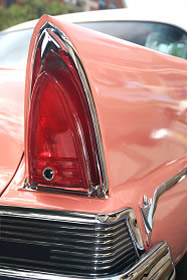
Automotive Loans: Trading in a Car
Automotive Loans: What Laws Protect Car Buyers?
Automotive Loans: Trade In or Sell a Car?
Automotive Loans: Is Zero Percent Financing Really Possible?
Automotive Loans: Determining a Down Payment
Automotive Loans: The Truth About "Add-Ons"
Automotive Loans: Top 5 Mistakes When Buying a Car
Automotive Loans: Shopping Online
Automotive Loans: Dealer Incentives to Buy
Automotive Loans: Car Buying Incentives
Automotive Loans: Should You Buy New or Used?
Automotive Loans: What to Know About Interest Rates
Automotive Loans: Negotiating a Loan with a Dealer
Automotive Loans: How Much Car Can You Afford?
Automotive Loans: Understanding Typical Loan Language
Automotive Loans: Types of Financing
Automotive Loans: Buying Vs Leasing
Automotive Loans: Applying for a Car Loan
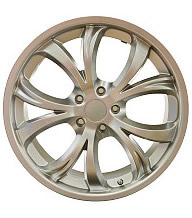
Buying a Car: Standard and Extended Warranties
Car Buying: Financing Background and Steps
Leasing a Car: Two Types of Leases - Closed & Open
Buying a Used Car: Two Options
Buying a Car: 5 Steps to Find the Perfect Deal
Automobile Buying/Financing
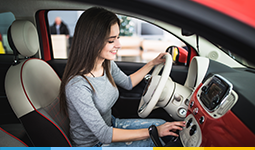
5 Steps to Find the Perfect Car
Auto loan defaults to rise 7 percent in 2010
Auto Show Season Tips for Buyers
When is the Best Time to Buy a New Car?
Making a Vehicle Purchase? Enjoy These Helpful Tips
Chances are, your next car will be used. Drive a hard bargain
What your car is really saying
2012 President's Day auto sales among best ever
Special Report: Hitting the Brakes on Auto Dealer Loans
Auto Insurance
Buying Ins - Shopping for Insurance
Best Car Insurance Plan for You

